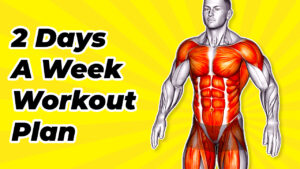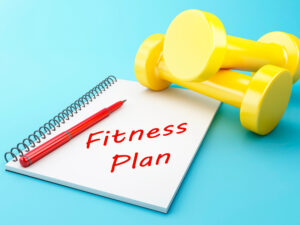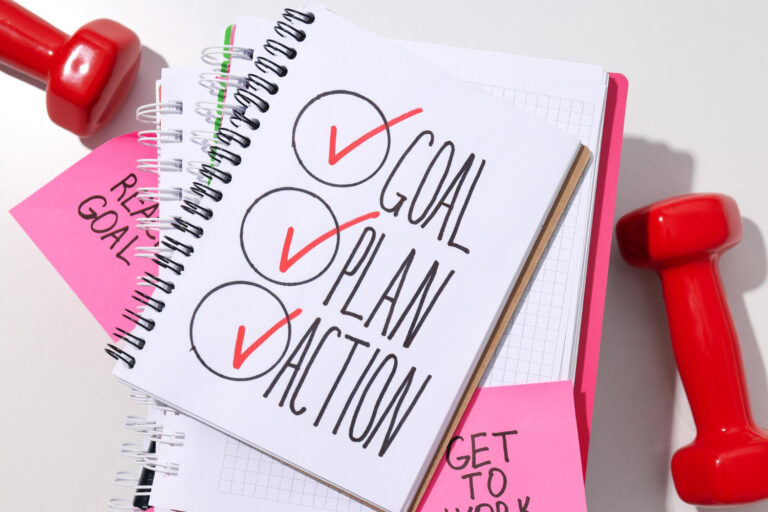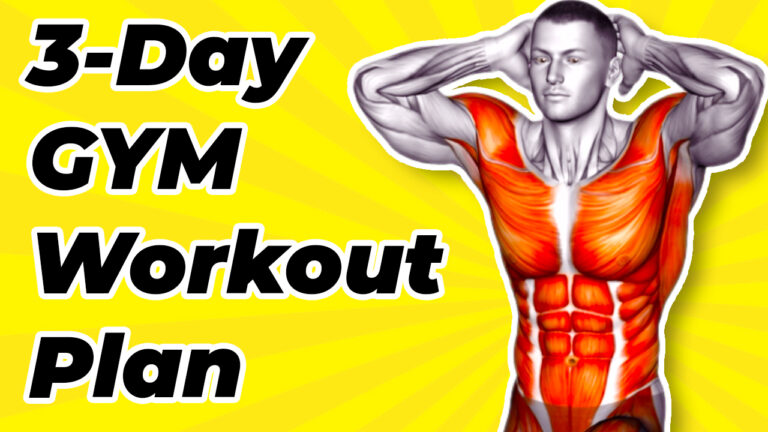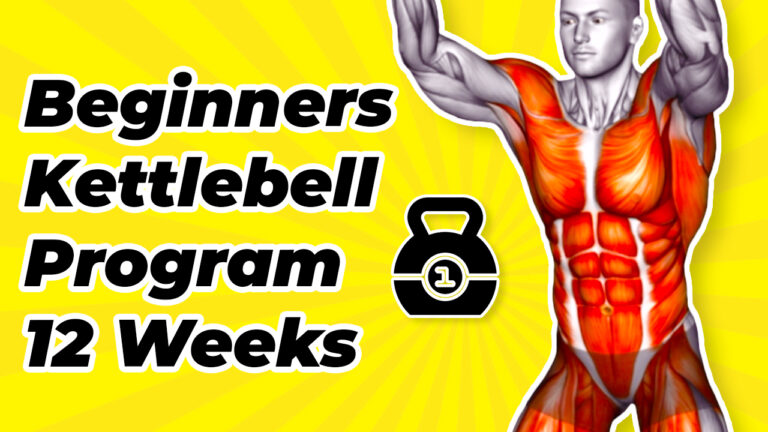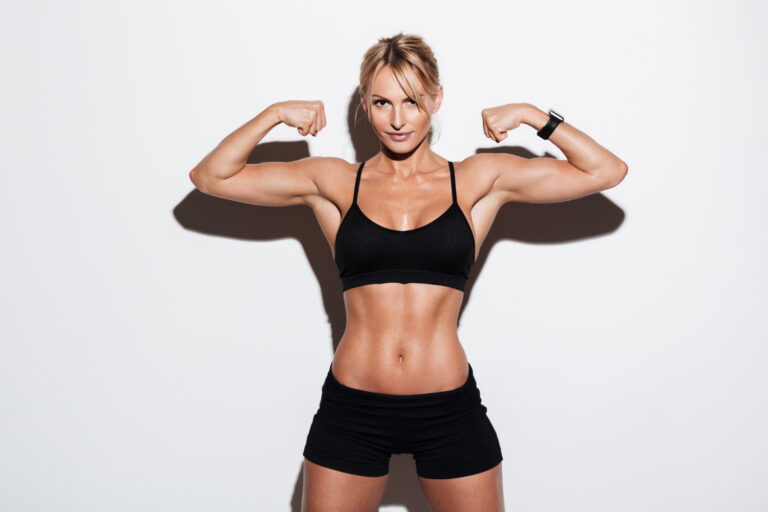Get Fit Fast – Beginner’s 3-Day Workout Plan Three Days a Week
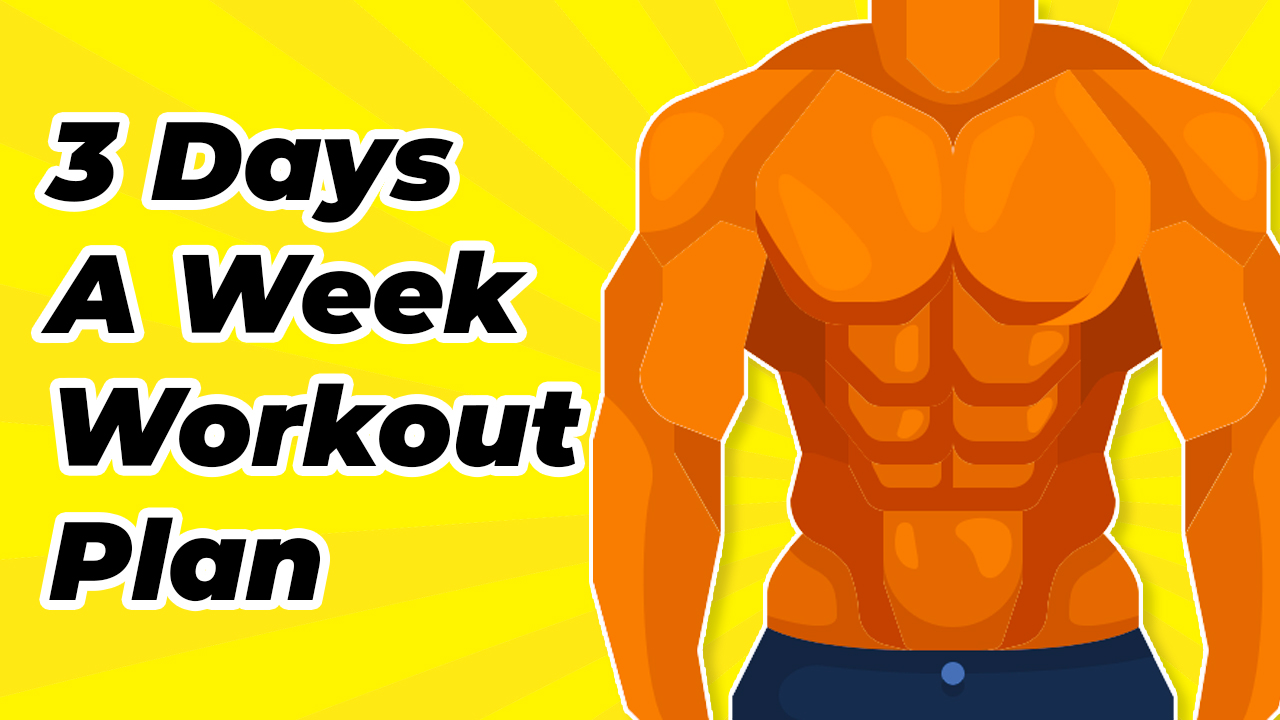
Starting a new fitness routine can feel overwhelming. Many beginners think they need to hit the gym every day to see results. This is not true. A well-planned 3-day workout split can be just as effective, especially for those new to muscle building and fat loss.
This plan allows your body ample time to recover while ensuring each major muscle group gets the attention it needs.
With over a decade of experience in strength training and fitness coaching, Serg Bayracny brings his expertise straight to you. His educational background from the Academy of Physical Education in Krakow, combined with practical training insights, makes him the perfect guide for your journey into three-days-per-week workouts.

Ready to transform? Let’s start this ride together.
Key Takeaways
- A 3-day workout split is a powerful way for beginners to build muscle and strength by focusing on different muscle groups each day.
- Essentials for starting include dumbbells, resistance bands, a bench, and a pull-up bar. This gear supports a variety of exercises at home.
- Progressive overload, increasing weight or reps over time, is key to gaining muscle. Start with light weights to master form then gradually add more.
- Nutrition plays a crucial role in muscle growth. Eating balanced meals with proteins, carbs, and healthy fats fuels your body for recovery and building strength.
- Rest and hydration are vital for success in any fitness routine. Aim for at least seven hours of sleep per night and drink plenty of water throughout the day.
Exploring the 3-Day Workout Split
A 3-Day Workout Split breaks down your gym time into three days. Each day, you work on different muscle groups to get strong and build muscles.
What is a 3-Day Split?
A 3-day split workout plan breaks your routine into three different sessions. Each one focuses on various muscle groups. This way, you work out a specific part of your body each day, then rest it while you move onto the next.
It’s like giving each muscle its own special day at the gym. This method helps avoid overtraining and injury by making sure muscles have time to recover before they’re worked again.
In my years of coaching, I’ve seen how effective a 3-day split can be for those with busy schedules. You hit major muscle groups hard during each session—be it upper body, lower body, or full-body workouts—and still leave ample time between for rest and recovery.
Think strength training one day, cardio another, and flexibility exercises to round things off. The glory lies in its simplicity: train just three days per week but make every session count toward building strength and muscle.
The beauty of a 3-day split is its balance—powerful workouts paired with essential rest.
Advantages of a 3-Day Split
A 3-day workout split packs a punch for anyone aiming to build muscle and strength, especially beginners. You hit major muscle groups hard once a week, allowing ample time for recovery.
This approach is key because muscles grow during rest, not when you’re lifting weights in the gym. The split into push days, pull days, and leg days makes it simple to focus on specific areas each day without wearing your body out.
For me, Serg Bayracny, stepping into the gym changed my life. I’ve seen firsthand how effective this routine can be through coaching many over my ten-plus years in fitness. High-Intensity Interval Training (HIIT) becomes an integrated part of the plan on full-body workout days.
It boosts fat loss while preserving muscle mass – a win-win for everyone involved. Plus, the diet advice we provide ensures you’re fueling your body right to see those gains.
Now let’s get into some popular 3-day splits that work well for beginners.
workout plan three days a week For Beginners

For starters in the gym, picking the right 3-day workout split matters a lot. It sets you on a path to hit all major muscle groups – like your chest, back, and legs – without overdoing it.
Push, Pull, Legs (PPL) Overview
| Day | Workout Type | Exercises | Sets | Reps |
|---|---|---|---|---|
| 1 | Push | Barbell Bench Press | 4 | 8-10 |
| Overhead Shoulder Press | 4 | 10-12 | ||
| Incline Dumbbell Press | 3 | 10-12 | ||
| Lateral Raises | 3 | 12-15 | ||
| Tricep Dips | 3 | 12-15 | ||
| Tricep Pushdowns | 3 | 12-15 | ||
| 2 | Pull | Deadlifts | 4 | 6-8 |
| Bent Over Barbell Rows | 4 | 8-10 | ||
| Pull-Ups or Lat Pulldowns | 3 | 8-10 | ||
| Single-Arm Dumbbell Rows | 3 | 10-12 each arm | ||
| Face Pulls | 3 | 12-15 | ||
| Barbell Curls | 3 | 12-15 | ||
| 3 | Legs | Squats | 4 | 8-10 |
| Romanian Deadlifts | 4 | 10-12 | ||
| Leg Press | 3 | 10-12 | ||
| Walking Lunges | 3 | 10 each leg | ||
| Calf Raises | 4 | 15-20 | ||
| Glute Bridges | 3 | 15-20 |
The Push, Pull, Legs (PPL) workout is a great 3-day split for beginners. It breaks down workouts into three simple days: one day you push weights away from your body, another day you pull them towards you, and the last day focuses on your legs.
This setup helps to work out different muscle groups properly. With my background in fitness coaching and strength sports, I’ve seen many beginners thrive with this plan because it’s straightforward and effective.
In the PPL routine, pushing exercises might include bench presses for your chest or shoulder presses for your deltoids. These moves help build upper body strength. Pulling exercises focus on the back and biceps using rows or pull-ups.
Lastly, leg day covers everything from squats that target quads and hamstrings to calf raises. Mixing these with High-Intensity Interval Training can boost results by adding cardio into the mix without overdoing it.
Plus, fitting in rest days ensures muscles have time to recover and grow stronger.

Upper, Lower, Full Body Basics
| Day | Workout Type | Exercises | Sets | Reps |
|---|---|---|---|---|
| 1 | Upper Body | Dumbbell Bench Press | 4 | 8-10 |
| Bent Over Rows | 4 | 8-10 | ||
| Shoulder Press | 3 | 10-12 | ||
| Pull-Ups | 3 | 10-12 | ||
| Bicep Curls | 3 | 12-15 | ||
| Tricep Dips | 3 | 12-15 | ||
| 2 | Lower Body | Squats | 4 | 10-12 |
| Lunges | 3 | 10 each leg | ||
| Romanian Deadlifts | 3 | 10-12 | ||
| Leg Press | 3 | 10-12 | ||
| Calf Raises | 4 | 15-20 | ||
| Glute Bridges | 3 | 15-20 | ||
| 3 | Full Body | Deadlifts | 4 | 6-8 |
| Dumbbell Bench Press | 4 | 8-10 | ||
| Single-Arm Dumbbell Rows | 4 | 10-12 each arm | ||
| Overhead Press | 3 | 10-12 | ||
| Goblet Squats | 3 | 12-15 | ||
| Plank | 3 | 1 min | ||
| Russian Twists | 3 | 20 each side |
Upper, lower, and full body basics form a solid foundation for people starting out in their fitness journey. Working out three days a week can hit all major muscle groups effectively.
For the upper part of your frame, exercises focus on arms, chest, and back. Moves like push-ups and pull-ups build strength in these areas. The lower body day targets legs with squats and deadlifts.
This boosts muscles in the thighs, calves, and glutes.
A full body training session combines moves that work several parts at once. It’s efficient for muscle growth and ensures you’re hitting each key area every week. Keep workouts simple but progressive; add weight or reps as you get stronger.
Simple moves make strong muscles.
Mastering Progressive Overload

To get stronger and build muscle, keep adding weight or doing more reps over time. This way, your body always has to work a bit harder. Read on to learn how!
What is Progressive Overload?
Progressive overload is a key part of getting stronger and building more muscle over time. It means you slowly add more challenge to your workouts. You can lift heavier weights, do more reps, or train longer.
This makes sure your muscles keep working hard and growing. To fit progressive overload into your 3-day split workout, increase the weight or reps each week.
By always pushing a little harder, you’ll see big improvements.
This way of training keeps your body guessing and improving. For beginners doing exercises like squats, pull-ups, and other workouts in their 3-day routine, it’s perfect for seeing progress without getting hurt.
Always aim to do better than last time – whether that’s lifting just one pound more or doing one extra squat.
Tips for Beginners
Starting a 3-day workout split introduces you to a practical routine that fits easily into your week. This method helps grow muscles and increases strength over time. Here are some tips for beginners eager to get the most out of their exercise schedule.
- Use High-Intensity Interval Training (HIIT) once a week. This boosts your heart rate and burns more calories in less time.
- Pick exercises that lift and tone, like push-ups for chest and squats for legs, to shape your body.
- Try different moves instead of hip thrusts, such as step-ups, for a stronger backside.
- Eat balanced meals that feed your muscles right and keep you energized.
- Drink plenty of water every day to stay hydrated and help muscle recovery.
- Sleep at least seven hours each night so your body can heal and build new muscle.
- Start with lighter weights to learn the correct form and avoid injury.
- Slowly add more weight or more reps each week to challenge yourself.
- Save money by using minimal equipment at home, like dumbbells or resistance bands.
- Look online for free resources like the 5000 exercise database for new workout ideas.
- Join a community, either local or online, where you can share progress and get support.
- Set clear goals each month to stay focused on what you want to achieve.
- Track your workouts and food in a journal or app to see how far you’ve come.
Starting my own fitness journey, I quickly learned that keeping things simple yet consistent was key. Incorporating these beginner tips into my routine made my workouts more effective and enjoyable, leading me down the path toward achieving my fitness goals faster than I ever imagined possible.
Nutrition and Recovery for Muscle Growth

Eating right and resting well makes muscles grow stronger. Check out more tips on how to do it!
Diet Tips for Building Muscle
To build muscle, eating the right foods is key. You need a mix of proteins, carbs, and fats. Focus on lean meats like chicken or fish for protein. Add whole grains for energy-giving carbs.
Don’t forget about nuts and avocados for healthy fats. These help your body grow and repair muscles after workouts.
Nutrition is just as important as the workout itself.
Drinking plenty of water is also vital for muscle growth. It keeps you hydrated and helps nutrients move through your body to reach your muscles faster. And sleep! Getting enough rest lets your muscles recover and grow stronger.
So, while working out 3 days a week focuses on training different muscle groups, what you eat every day matters just as much to see real gains.
Sleep and Hydration Importance
Getting enough sleep and staying hydrated are key for fitness success. Your muscles need rest to grow after workouts like the 3-day split. Think of sleep as your body’s time to repair muscle tissue you worked hard during push, pull, and leg days.
Drink lots of water too. Hydration keeps your energy up and helps your body use nutrients better.
In my years coaching, I’ve seen people focus only on exercise but ignore rest and water. That slows down muscle growth. For best results in a 3-day workout split, aim for at least seven hours of sleep each night and drink plenty of fluids throughout the day—not just when you’re thirsty.
This approach has helped many in our Workout Guru community feel stronger every week.
Common Questions on 3-Day Workout Splits

Many wonder if a 3-day workout split is good for starters. They ask how long they should do it and if adding in running or biking fits well with the plan. Check this out to learn more!
Effectiveness of a 3-Day Split for Beginners
A 3-day split workout plan shines for beginners. This approach divides workouts into three days each week, focusing on different muscle groups each day. It’s a powerful way to start because it builds strength and skill while avoiding overwork.
Each session in the gym targets specific muscles, giving others time to rest and grow stronger. Beginners often see quick progress, moving from one level to the next as they lift weights or do body-weight exercises.
Success stories highlight how new gym-goers find this schedule manageable and effective. Sticking to a 3-day full-body routine helps them keep going without feeling overwhelmed. With calculators available for tracking progress, beginners can see their improvements in muscle size or overall fitness within weeks of starting their workout schedule.
Start small, aim high; your journey begins with dedication.
Now let’s talk about recommended durations for following a 3-day split.
Recommended Duration for Following a 3-Day Split
After exploring how effective a 3-day workout split can be for beginners, it’s key to talk about how long you should stick with this plan. Most fitness experts suggest keeping up with a 3-day split for at least six weeks.
This time frame lets your body get used to the new routine. It also gives your muscles time to grow and get stronger.
You might wonder if six weeks is enough or if you should go longer. Well, that depends on your progress and goals. After the initial six weeks, it’s smart to check in on your improvements.
You may notice changes in muscle size or how much weight you can lift. If you see good results, continuing with the same split can keep those gains coming. But if things get too easy, think about making the workouts harder or trying a different type of split based on your goals.
Incorporating Cardio into a 3-Day Split
Adding cardio to your 3-day split boosts results. High-Intensity Interval Training (HIIT) fits well. You mix fast, hard efforts with short rests. This burns fat and improves heart health without long gym times.
In my years training others, I’ve found HIIT makes a big difference.
On off days from lifting, try fun cardio like the Turkish Get Up. It keeps things fresh and works your whole body in new ways. Mixing these into your week helps you get stronger and leaner faster.
Trust me – it keeps you eager for more workouts!
How to Stay Motivated

Staying motivated can be tough, but setting clear wins and watching your progress can keep you going. Keep goals in sight and track every small win to feel that buzz of moving forward.
How to Set Achievable Goals
Setting achievable goals starts with understanding what you want from your 3-day workout split. Think small at first. Instead of aiming to work out every day, focus on the times a week you can truly commit—three is a good start.
Make each goal clear and possible. For example, instead of saying “I’ll get stronger,” specify how much weight you aim to lift after six weeks of following your best 3-day workout split.
From my experience in fitness coaching, I’ve seen many beginners set their sights too high too soon, leading to disappointment. Using tools like body fat calculators or finding your ideal body weight gives you solid numbers to work toward.
Also, mix up specific muscle groups in one workout during your 3 days per week schedule for balanced growth and recovery. This approach keeps progress measurable and enthusiasm high as you see real results from week to week.
How to Monitor Your Progress
To keep an eye on your growth, High-Intensity Interval Training (HIIT) can show you big wins fast. You’ll see muscles build and fat melt quicker than with slow cardio. A neat trick is to use calculators for checking how much body fat you have or what your ideal weight might be.
These tools are super helpful to make sure you’re on the right path.
Also, counting how often you workout and upping the amount of weight you lift over time will tell you if you’re getting stronger. Write down your exercises every day in a notebook or an app.
Then, look back after a few weeks to see your progress. It’s exciting when you realize that what once was hard becomes easier!
Conclusion
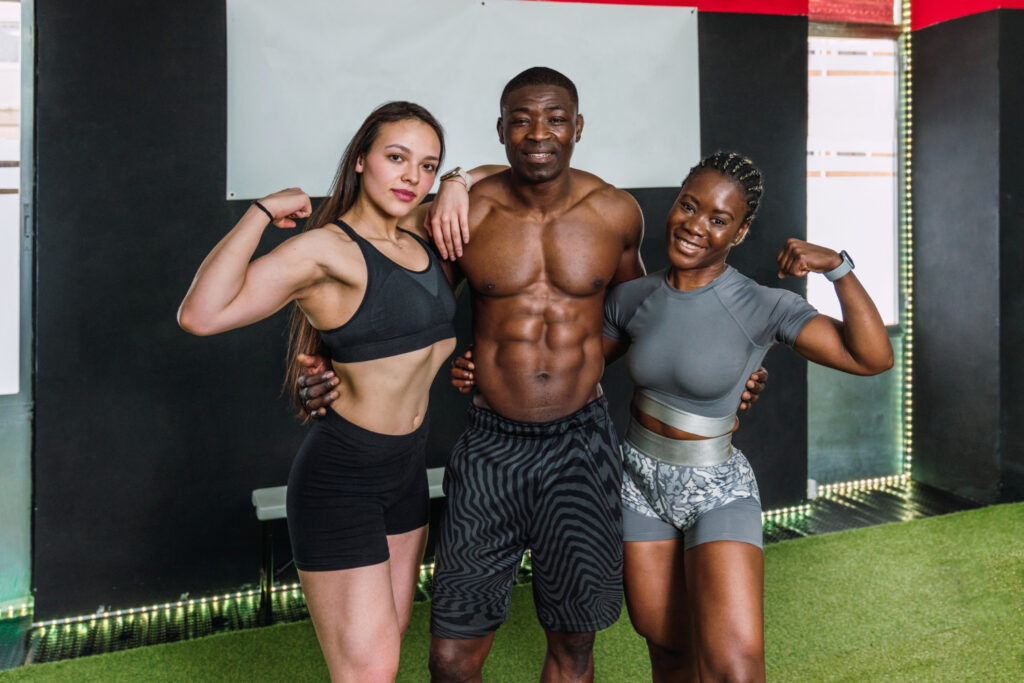
We talked about a simple 3-day split plan for starters. This plan is easy to start and saves time. You learned about push, pull, legs (PPL), upper-lower-full body, and classic workouts.
For home gyms or small gear setups, we showed what you need. We also covered how to grow muscles steadily and eat right for strength. Tips on staying driven rounded out our guide.
This training setup is great because it fits easily into your week. It helps newbies grow strong in a smart way without spending all day at the gym. Eating well and resting enough make sure your muscles have what they need to get bigger.
For more help, our website has over 5000 exercises and lots of advice on eating for muscle gain. Setting clear targets helps keep you moving towards getting fitter.
Starting this journey can change how you feel about fitness. Your next step? Pick up some weights or begin with body weight moves today! You’ll see progress soon if you stick with it – one workout at a task chair sit-up session at a time.
FAQs
1. What is a 3-day workout split for beginners?
A 3-day workout split, or full-body routine, involves splitting your workouts over three days in the week. It’s an effective way to engage different muscle groups on different days.
2. How does a classic bodybuilder split differ from a 3-day full body workout?
The classic bodybuilder split targets one or two specific anatomical muscle groups per workout session, usually over more than three days. In contrast, a 3-day full body workout engages all major muscle groups within each of the three sessions in the gym.
3. Can I progress with just working out three times a week?
Absolutely! A well-structured 3-day program that includes exercises like squats and pull-ups can lead to muscle hypertrophy and improved flexibility if you maintain volume and frequency consistency.
4. How do diet and supplements support my 3-day workout plan?
Diet plays an essential role in any fitness regimen by providing necessary nutrients for recovery and growth… And yes, certain bodybuilding supplements can enhance your performance during your weight training too!
5. Should I expect pain during my initial weeks of this program?
While some discomfort due to new movements is normal… persistent pain isn’t! Always remember – it’s crucial to have at least one rest day between every day in the gym for optimal recovery.
6. Is there room for progression beyond the beginner’s level on this plan?
Sure thing! You could eventually move onto other plans such as upper-lower splits or even four day splits as you gain strength and experience… The key is steady progress from week to week.

Author
Years ago, the spark of my life’s passion ignited in my mind the moment I stepped into the local gym for the first time. The inaugural bead of perspiration, the initial endeavor, the very first surge of endorphins, and a sense of pride that washed over me post-workout marked the beginning of my deep-seated interest in strength sports, fitness, and sports nutrition. This very curiosity blossomed rapidly into a profound fascination, propelling me to earn a Master’s degree in Physical Education from the Academy of Physical Education in Krakow, followed by a Sports Manager diploma from the Jagiellonian University. My journey of growth led me to gain more specialized qualifications, such as being a certified personal trainer with a focus on sports dietetics, a lifeguard, and an instructor for wellness and corrective gymnastics. Theoretical knowledge paired seamlessly with practical experience, reinforcing my belief that the transformation of individuals under my guidance was also a reflection of my personal growth. This belief holds true even today. Each day, I strive to push the boundaries and explore new realms. These realms gently elevate me to greater heights. The unique combination of passion for my field and the continuous quest for growth fuels my drive to break new ground.





